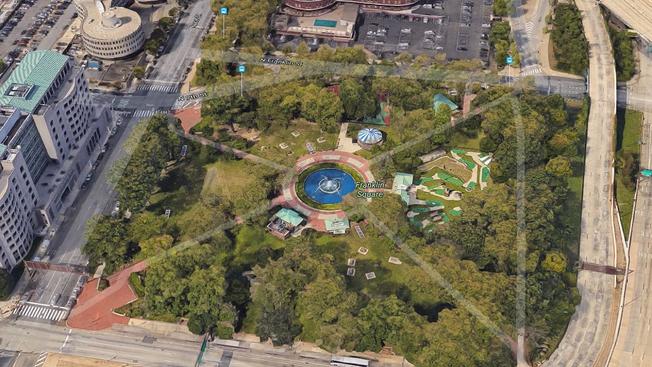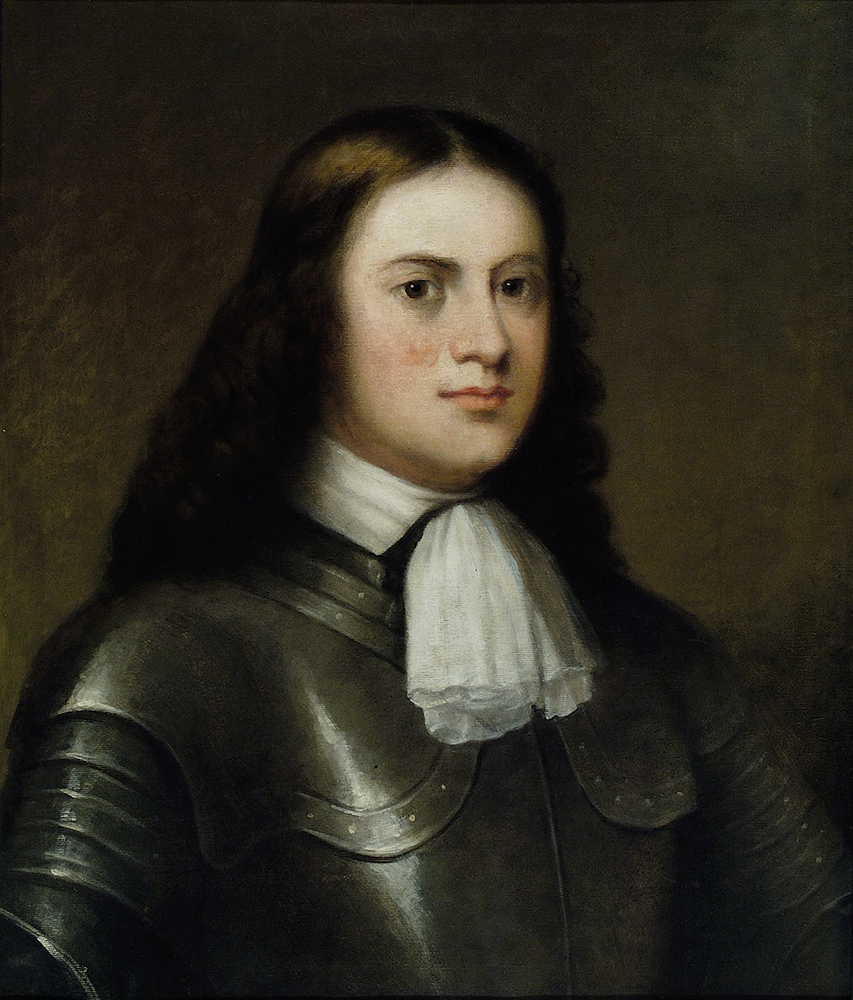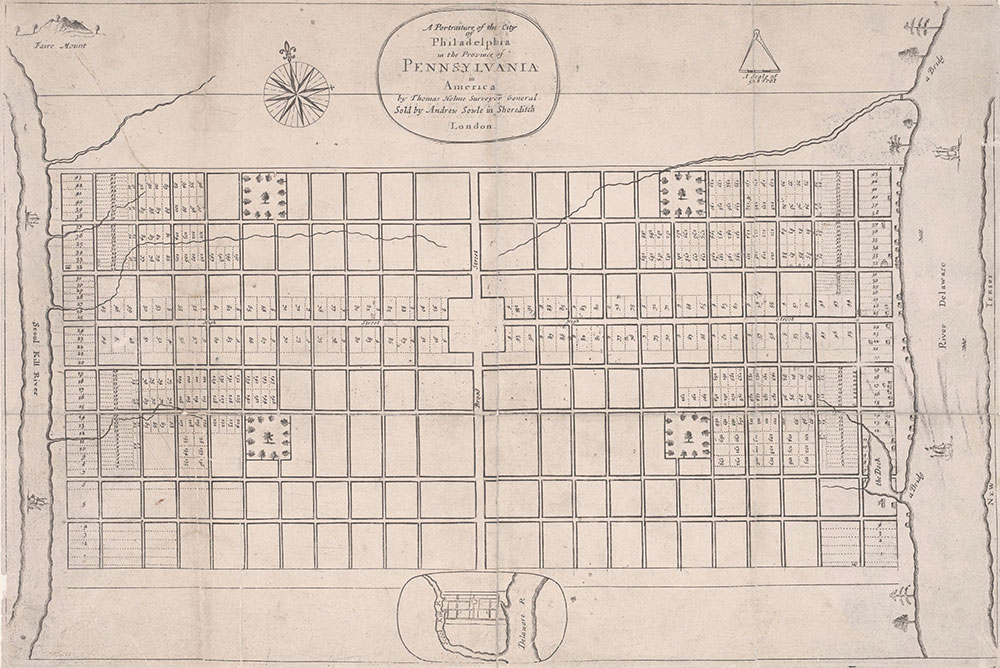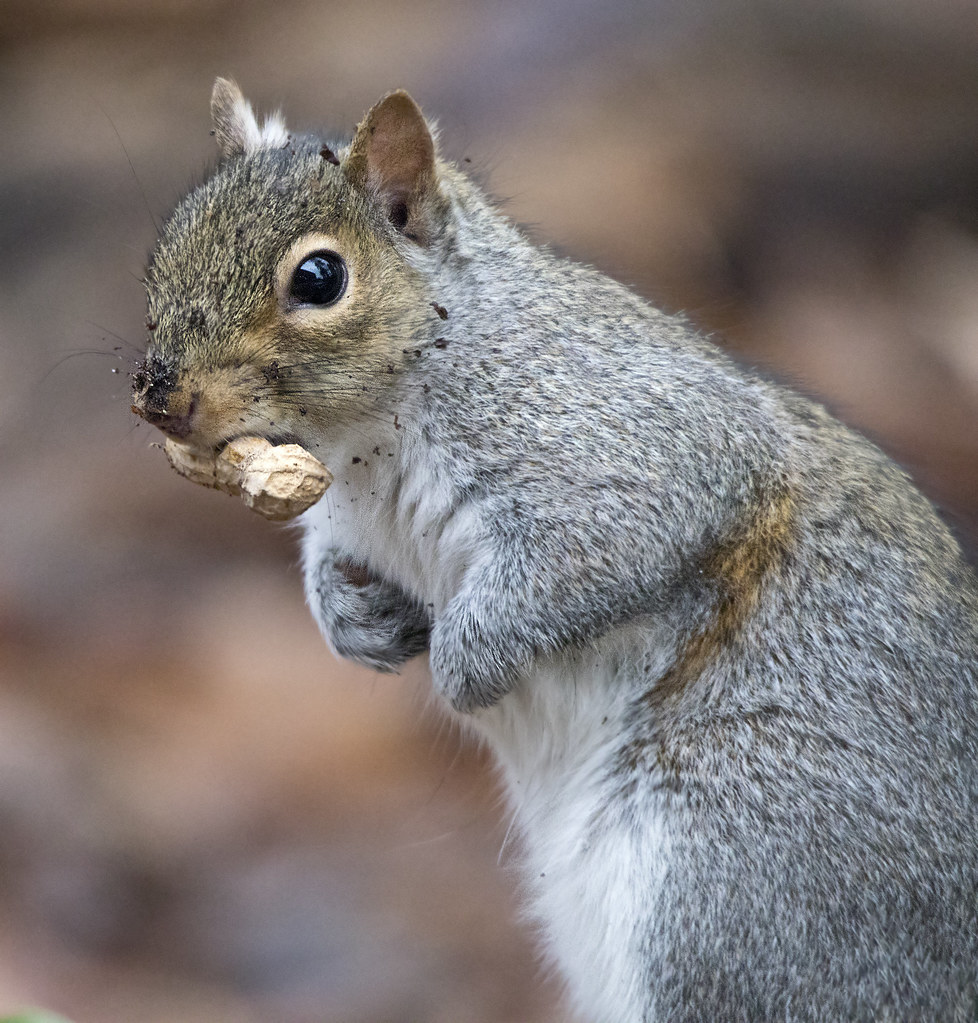Don’t worry, I capitalized the word NUTTY for a reason. While sorting through some documents here at the Pennsylvania State Historic Preservation Office (PA SHPO), I came across a file for the National Register listed Franklin Square in Philadelphia.
While it was interesting to learn about Franklin Square’s majestic fountain, the Parx Liberty carousel, and its military history, I couldn’t help but wonder, “Why does this little plot of green space exist in the first place, and is there anything more interesting about this square?”
To my surprise, YES, there is!

Let’s look at why Franklin Square exists in the first place:
As most of us Pennsylvanians know, in 1681, William Penn was granted a large tract of land in North America in hopes of providing a new colony for his religious friends, the Quakers. Penn decided to settle and develop the area in what is now Pennsylvania, but he began his new initiative with the creation of the city, Philadelphia.

Just two years later, in 1683, Penn published a map of the city in hopes of attracting settlers from England. But Penn did not just design another boring old city, he felt that the old cities of England were unplanned and disorganized, which often lead to chaotic streets, frustrated citizens and widespread disease.
So, for his city he wanted to create a layout that followed a new “American” street design. To do this, Penn utilized a grid pattern. This grid pattern would allow for wider streets, which would create more room for the daily city hustle and bustle. The grid plan would also dedicate more area to land plots, so he could create areas for green spaces! (1) What a guy! #Urbanlandscapes

Penn created five public squares within his grid design, one for each quadrant of the city and one in the center: Washington, Penn, Rittenhouse, Logan, and of course Franklin. Now, their original names were geographic locations, but they were later changed to the names we know today, but that history is for another blog. On to the neat stuff!
What’s so neat about Franklin Square? Why did you say the word NUTTY earlier?
Alright, so as I was learning about Franklin Square, I learned a neat fact about some of those Eastern Gray Squirrels you see EVERYWHERE. They roam free at universities and can be seen stealing nuts and bread from trash cans within every city up and down the east coast. Well, guess where those lil’ cuties were first introduced into the urban landscape!? You guessed it, Franklin Square!
Philadelphia Magazine highlights a research report conducted by University of Pennsylvania Professor, Etienne Benson:
“The first introductions of free-living squirrels to urban centers took place in cities along the Eastern Seaboard between the 1840s and the 1860s. Philadelphia seems to have been the pioneering city, with Boston and New Haven, Connecticut, following soon after. In 1847 three squirrels were released in Philadelphia’s Franklin Square and were provided with food and boxes for nesting.
Additional squirrels were introduced in the following years, and by 1853 gray squirrels were reported to be present in Independence, Walnut Street, and Logan Squares, where the city supplied nest boxes and food, and where visiting children often provided supplementary nuts and cakes. In 1857 a recent visitor to Philadelphia noted that the city’s squirrels were “so tame that they will come and take nuts out of one’s hand” and added so much to the liveliness of the parks that “it was a wonder that they are not in the public parks of all great cities.” (2)
I highly doubt William Penn would have known that one day, one of his five beautiful squares would become the Mecca for the Eastern Gray Squirrel, but regardless, Franklin Square continues to serve as a thriving ecosystem for the urban squirrel to this day.

So the next time those cute, little, pesky squirrels are driving you a little NUTTY, thank Philadelphia and its thriving urban landscapes!
Sources:
1. Munden, Christopher. “Stories Behind Philly Squares”. Where Traveler.com. https://www.wheretraveler.com/philadelphia/play/stories-behind-phillys-squares
2. Van Zuylen-Wood, Simon.“Philly was the First City on American to have Squirrels”. PhillyMag.com. 2019. https://www.phillymag.com/news/2013/12/12/philly-first-city-america-squirrels/
Today’s post is by Susan Layton, from JMT. Susan is the project lead for the State Historic Preservation Office Digitization Project. She has been contracting sporadically with the PHMC for numerous projects since 2013. Her specialties include Historic Preservation, Archaeology and now, the Eastern Gray Squirrel.
Comment Policy
PHMC welcomes and encourages topic-related comments on this blog. PHMC reserves the right to remove comments that in PHMC’s discretion do not follow participation guidelines.
Commenters and Comments shall be related to the blog post topic and respectful of others who use this site.
Commenters and Comments shall not: use language that is offensive, inflammatory or provocative (this includes, but is not limited to, using profanity, obscene, or vulgar comments); disparage other commenters or people; condone illegal activity; identify the location of known or suspected archeological sites; post personal information in comments such as addresses, phone numbers, e-mail addresses or other contact details, which may relate to you or other individuals; impersonate or falsely claim to represent a person or an organization; make any commercial endorsement or promotion of any product, service or publication.
If you would like to comment on other topics not related to this blog post but related to PHMC, please fill out the PHMC Contact Us Form.
Leave a Reply